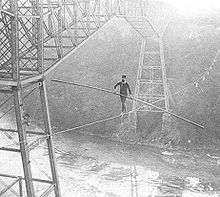
Back Traagheidsmoment Afrikaans عزم القصور الذاتي Arabic Momentu d'inercia AST Момант інерцыі Byelorussian Момант інэрцыі BE-X-OLD Масов инерционен момент Bulgarian জড়তার ভ্রামক Bengali/Bangla Moment inercije BS Moment d'inèrcia Catalan Moment setrvačnosti Czech
| Moment of inertia | |
|---|---|
 Flywheels have large moments of inertia to smooth out changes in rates of rotational motion. | |
Common symbols | I |
| SI unit | kg⋅m2 |
Other units | lbf·ft·s2 |
Derivations from other quantities | |
| Dimension | M L2 |
| Part of a series on |
| Classical mechanics |
|---|

The moment of inertia, otherwise known as the mass moment of inertia, angular/rotational mass, second moment of mass, or most accurately, rotational inertia, of a rigid body is defined relative to a rotational axis. It is the ratio between the torque applied and the resulting angular acceleration about that axis. It plays the same role in rotational motion as mass does in linear motion. A body's moment of inertia about a particular axis depends both on the mass and its distribution relative to the axis, increasing with mass & distance from the axis.
It is an extensive (additive) property: for a point mass the moment of inertia is simply the mass times the square of the perpendicular distance to the axis of rotation. The moment of inertia of a rigid composite system is the sum of the moments of inertia of its component subsystems (all taken about the same axis). Its simplest definition is the second moment of mass with respect to distance from an axis.
For bodies constrained to rotate in a plane, only their moment of inertia about an axis perpendicular to the plane, a scalar value, matters. For bodies free to rotate in three dimensions, their moments can be described by a symmetric 3-by-3 matrix, with a set of mutually perpendicular principal axes for which this matrix is diagonal and torques around the axes act independently of each other.
In mechanical engineering, simply "inertia" is often used to refer to "inertial mass" or "moment of inertia".[1]
- ^ Escudier, Marcel; Atkins, Tony (2019). A Dictionary of Mechanical Engineering (2 ed.). Oxford University Press. doi:10.1093/acref/9780198832102.001.0001. ISBN 978-0-19-883210-2.



